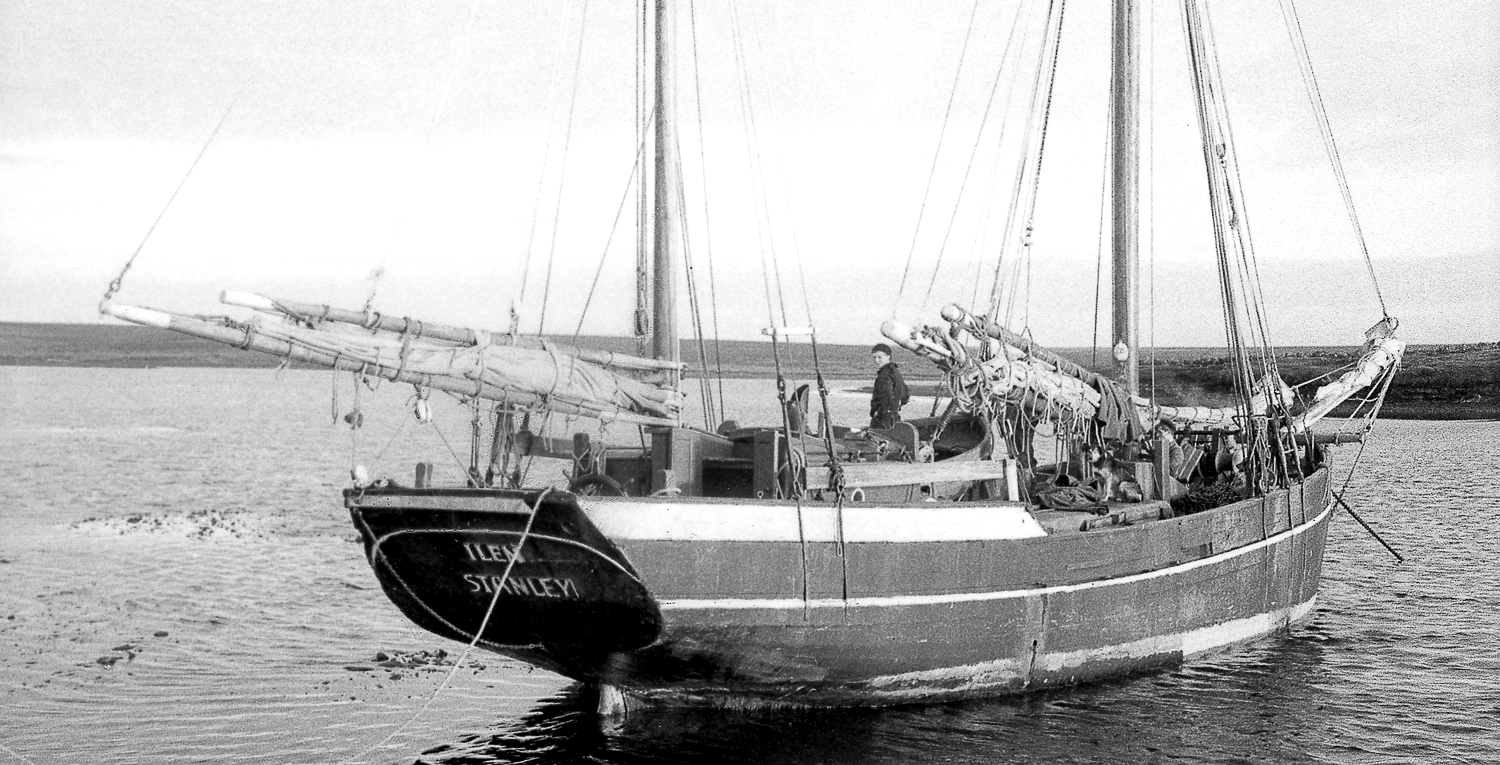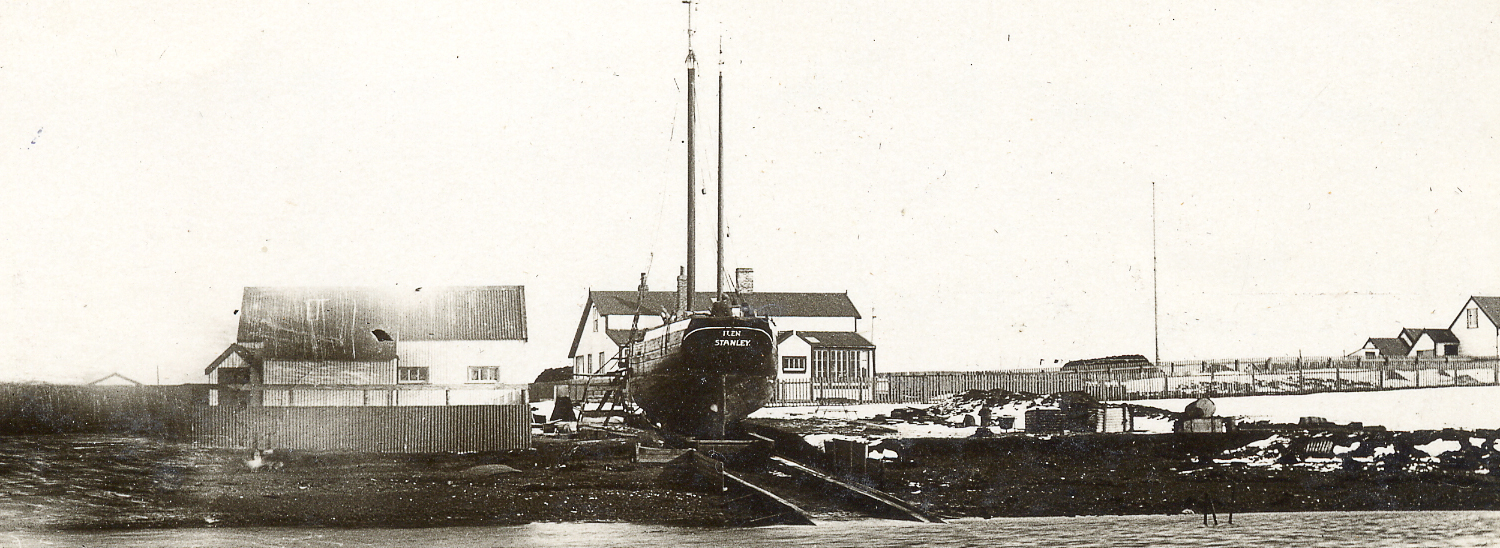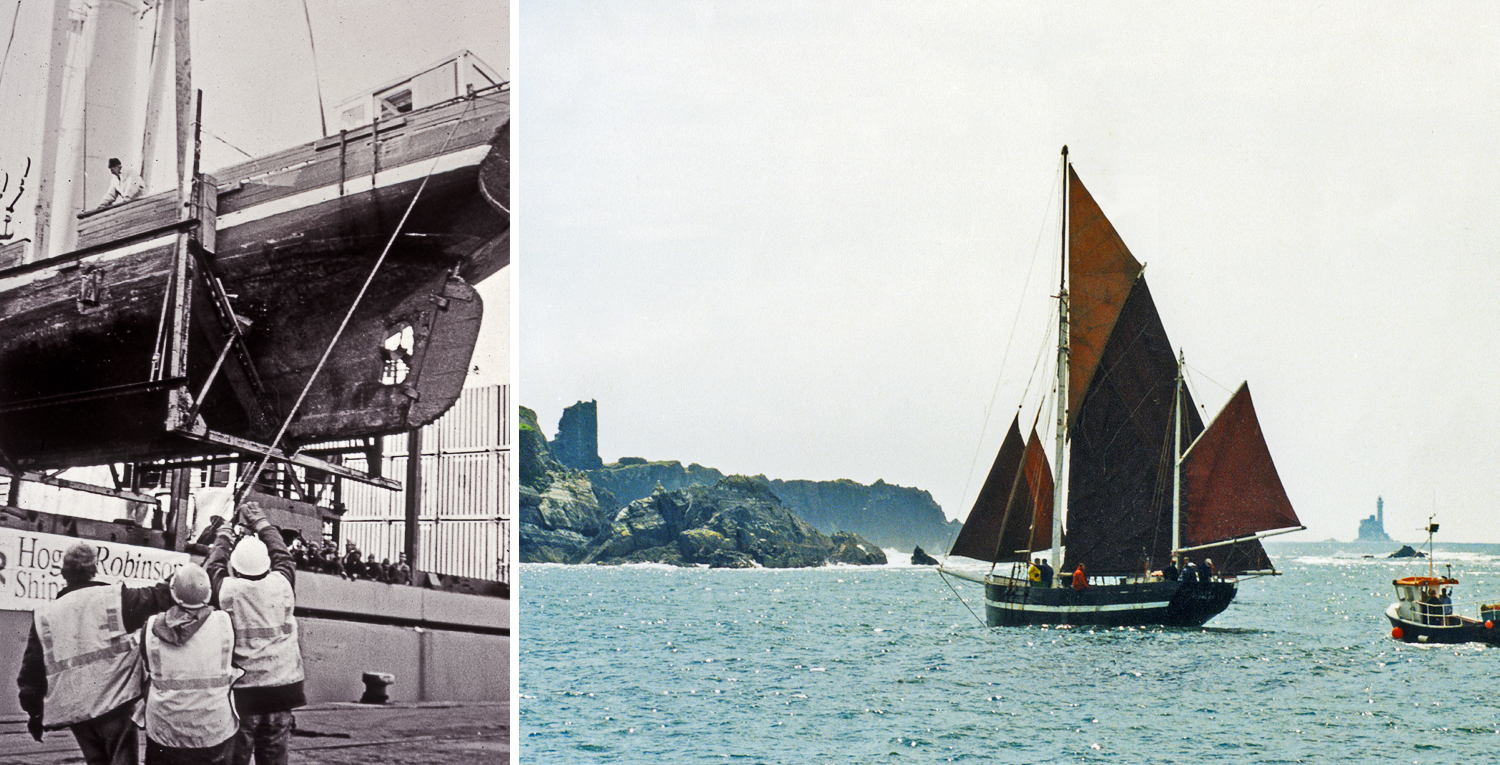The Happy Voyage (1926-1927)
Building of Ilen and delivery to the Falklands.
After Saoirse had rounded Cape Horn to begin the final stage of the great voyage back to Ireland, on 6th December 1924 Conor O’Brien had ‘put in, most properly, to the Falkland islands, being again short of potatoes’. He stayed there until February 28th 1925, getting to know the islands while the islanders in turn got to know the remarkable little ship which come to their archipelago by the most demanding route. The pilot at the difficult harbour of Port Darwin in the Falkland Islands was particularly impressed by this vessel which seemed so much more suited to those waters than his own officially-allocated craft. Yet it was almost by accident, or so he would have us believe, that Conor O’Brien was given the job of designing and arranging the building of a larger version of Saoirse to be the service vessel for the Falklands Islands Company. In the summer of 1925, he was in London, and in trying to buy a tie-pin he tendered a Falklands Islands £1 note. It was politely declined. But as the offices of the Falklands Islands Company were nearby, he went there to get twenty shillings sterling for his note. They obliged, he got talking to the Company Secretary, and between the jigs and the reels, by October 1925 a 56ft ketch, but with auxiliary engine also specified, was under construction in Baltimore under the supervision of Tom Moynihan.
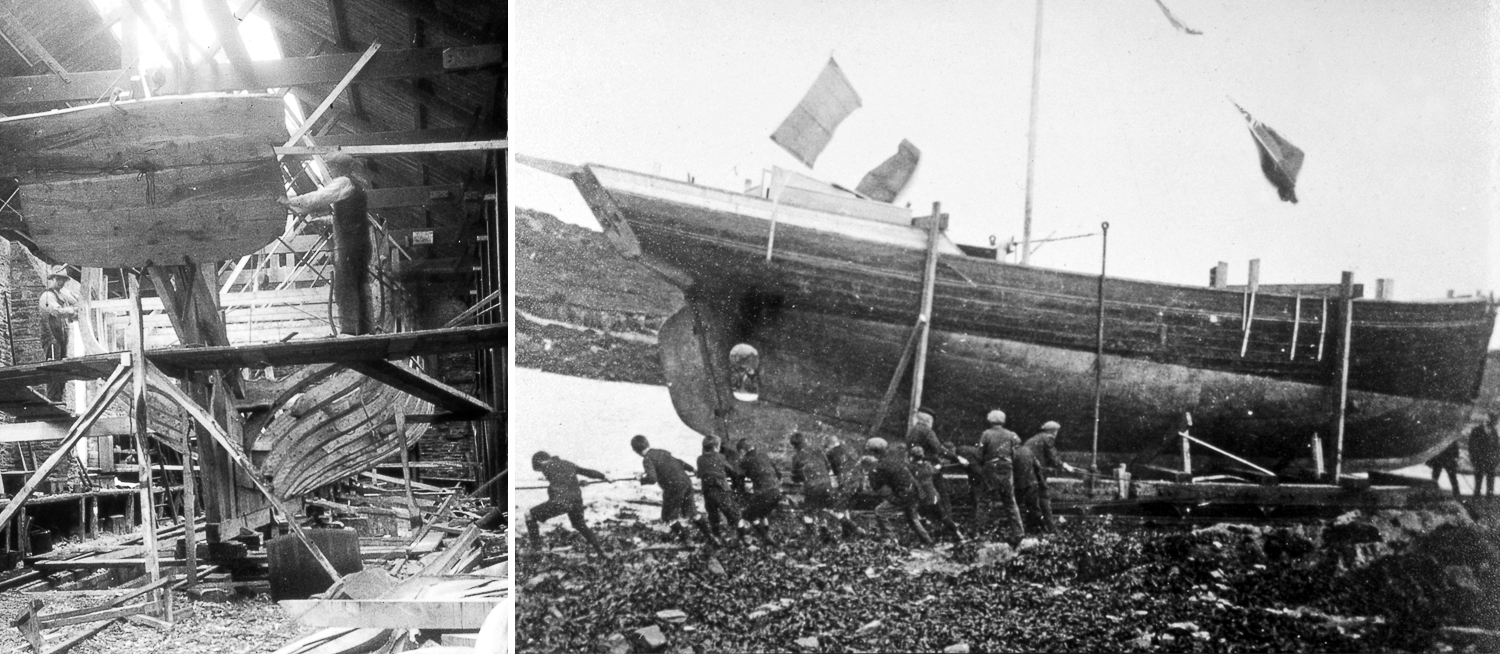
O’Brien, being somewhat tetchy at the best of times, and under added pressure through having to finish writing his book, tended to be hyper-critical of the building work. Yet he also acknowledged that Tom Moynihan played a key role in the design of the new boat, and though she was very much Saoirse’s big sister, O’Brien remarked when he saw her ready for launching on the slip at Baltimore that she was ‘a handsome model’. As for the quality of the construction, the fact that the Ilen – named for the West Cork River which flows to the sea at Baltimore – was to survive 60 brutally busy years as the Falklands service boat, undertaking rough jobs of many types, speaks volumes for the basic quality of her construction.
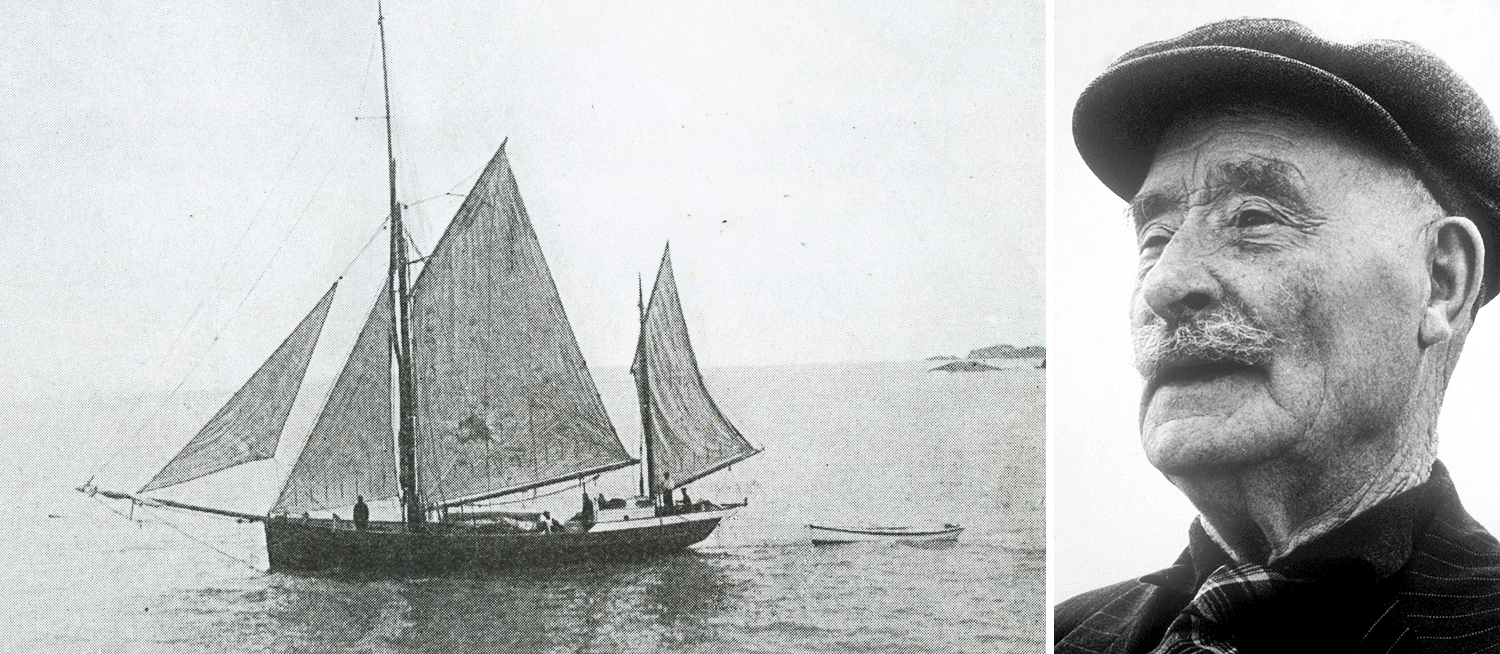
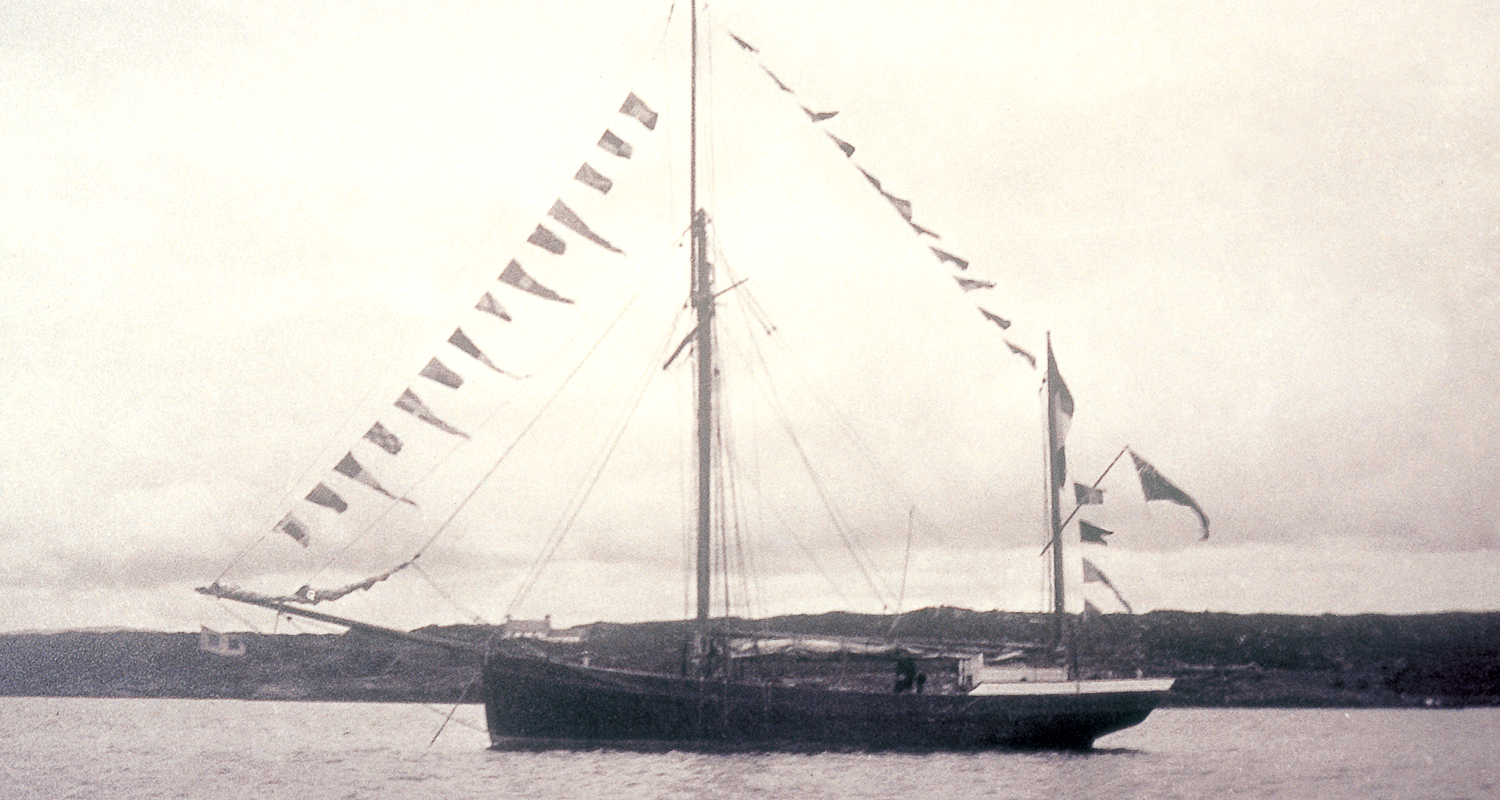
But before she could demonstrate her qualities, much needed to be done to prepare her for the delivery voyage to the Falklands, which O’Brien had agreed to undertake as part of the deal. So after the launching in the Spring of 1926, he brought her home to Foynes, calling at Derrynane on the way. Thus not only did the Ilen spend most of her time while afloat in Ireland in the Shannon Estuary, but as well she gave O’Brien an opportunity to revisit favourite haunts in Kerry.
Although destined to be a working boat, Ilen had to be registered as a yacht for insurance purposes for the delivery voyage, as her skipper’s only seagoing qualification was as a Yacht-master. So she sailed from Baltimore, after considerable partying, in August 1926 with ‘Royal Irish Yacht Club’ elegantly inscribed on her transom.
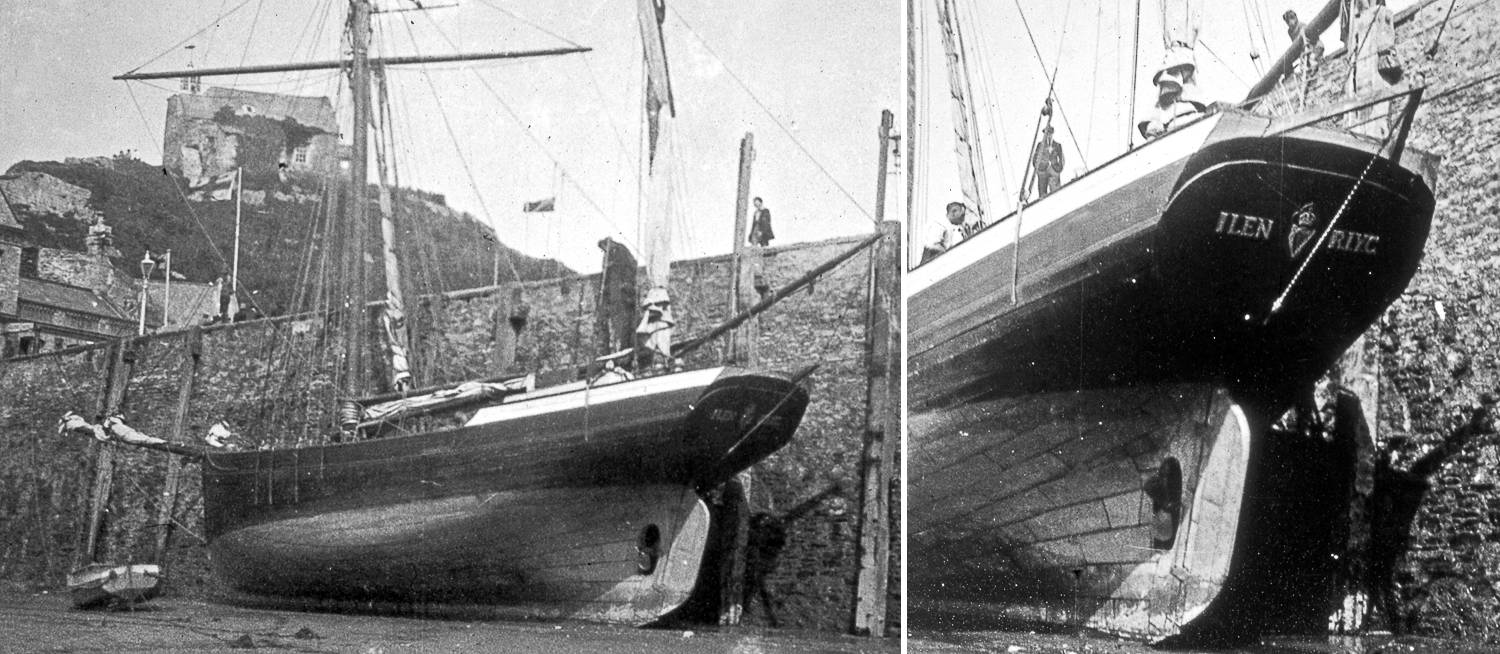
O’Brien’s crew were two Cape Clear seamen, Denis Cadogan and his cousin Con. With Saoirse, he had endured many crew changes on the circumnavigation, but the ‘Capers’ proved congenial shipmates, and went all the way to Falklands. From Baltimore, the Ilen went first to Avonmouth near Bristol for fuel and stores provided by the company, and then after putting into Ilfracombe further down the Bristol Channel for adjustments to the auxiliary engine, they sailed away south to Madeira and ports in Brazil (including Rio de Janeiro where O’Brien much enjoyed the architecture) and on to Mar Del Plata in Argentina, whose claim to the Falklands Islands found in favour with O’Brien.
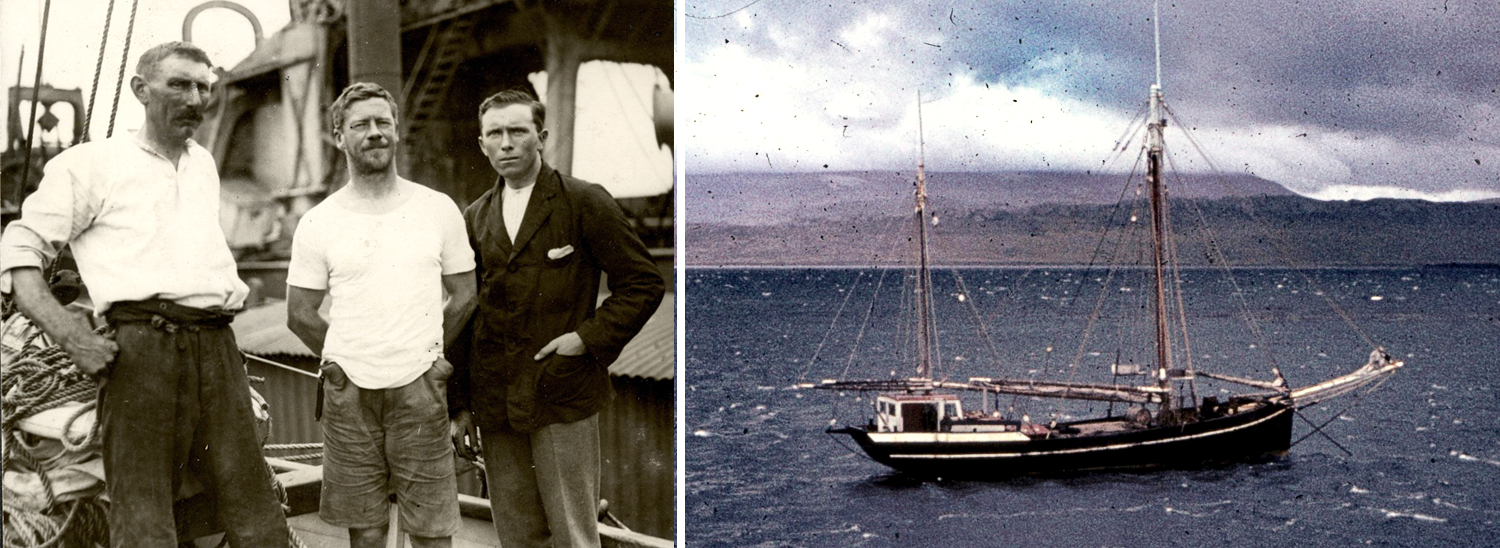
But despite the anomalies of his situation, the Argentinians provided no problems, and when Ilen reached Port Stanley early in the new year of 1927, it was to a warm reception. Conor O’Brien fondly concluded his account of this venture thus:
‘(We) put upon the sails of my old ship, with help of the two good comrades who had brought her from Ireland, that careful stow which is the due of any port before I closed the most enjoyable of all my voyages with the conventional order; that will do, men.’
